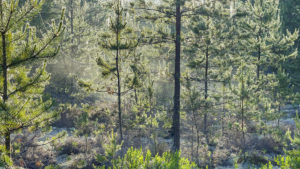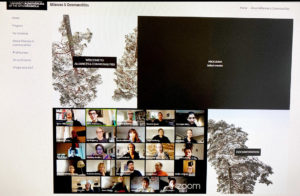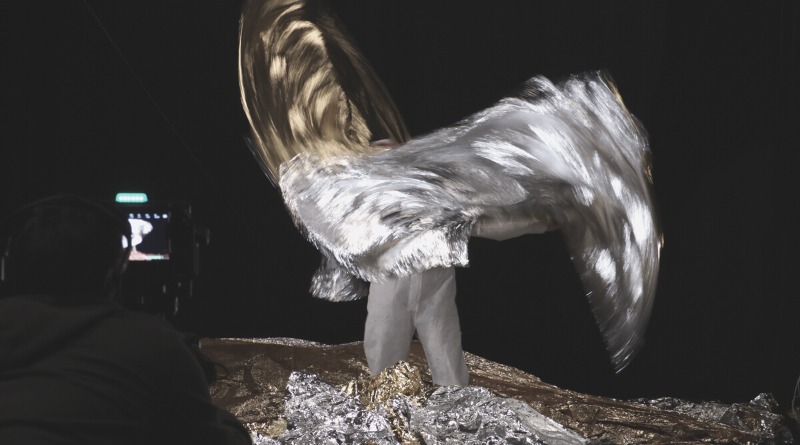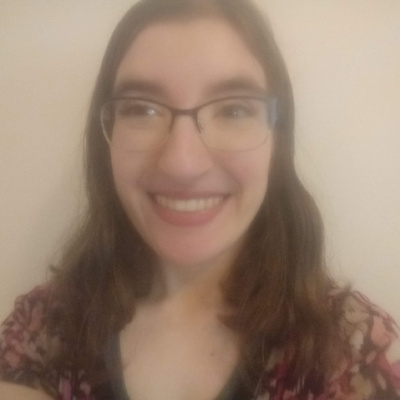By Going Online, Alliances and Commonalities Conference Gives Art a Common Ground
Hosted by the Stockholm University for the Arts, the online Alliances and Commonalities Conference will get you pondering the hows and whys of making art, offering a deep-dive into artistic research (AR). Now, the Conference-planning team shares insight on the process of making–and remaking–their event in its third iteration.

Whether you’re situated in Stockholm or abroad on your laptop, artists and academics alike will soon be able to find common ground at the third-ever Alliances and Commonalities Conference. Happening from October 20-22, 2022, the online event comprises a packed three-day showcase of innovative performances, challenging art pieces, and other thoughtful artistic research (AR) projects in areas from circus to opera to filmmaking. Attendees will find ample chance to engage both with projects and their presenters—and creators, new ways to reflect on their craft.

Held biennially since 2018, the Alliances and Commonalities Conference is the brainchild of Stockholm University of the Arts (or Uniarts). An extension of the school’s arm of artistic research, the Conference was first conceived as a forum for performers and researchers to interact and bring each other’s practice to a new level. The Uniarts team wanted to build a space where artistic researchers could present and engage in dialogue about their work, ask and answers questions, and make connections. And so, guided by that vision, they built a conference out of live shows, seminars, and workshops—a field where attendees could encounter new ideas and discover collaborators.
Now in its third term, the 2022 event is no less being built from the ground up… even if that ground is a Zoom meeting room. From around the world, registrants can tune in to the Conference on October 20 to discover opportunities and interact with projects and their presenters in meeting rooms and seminars.
As well, a team of five curators, comprised of Uniarts faculty like Performing Arts Professor (and the Conference’s newly-appointed Artistic Director) John-Paul Zaccarini, has sought out projects in their respective areas of expertise, covering one of the school’s four AR profile areas:

- “Site, Event, Encounter” projects investigate the “interplay of art and society”: how do artists participate in the world and the events around them, and how do they invite their audience to do the same? Work in this area covers topics from public art to the ways art is practiced in localised contexts.
- Research in “Art, Technology and Materiality” delves into the “interplay between making and thinking” that shapes a material piece of artwork. Presenters in this area play around with the philosophy that physical objects connect us to our world and to each other. In that case, they ask, how do we use the things we make to convey a deeper message?
- “Concept and Composition” research explores the practices and processes of art-making, from first inspiration to final product. It considers elements of ethics and aesthetics, dramaturgy, narrative and storytelling structures, and the different lenses through which art is interpreted.
- “Bodily and Vocal Practices” presenters offer us a deep dive into physical performance art—how it’s made and interpreted, from creative techniques to pedagogy, from sustainable practice to political reflection.
For this third Conference, the curation team also has a more specific theme in mind: they’re seeking works of art that speak to the challenges of the last two years of pandemic. Their curatorial statement asks us all to consider,“Who, what, where, when, why and how are artists and researchers situating their practices now? What transforms? What transmits? What matters?”
After all, the Alliances and Commonalities team has no doubt been asking themselves the same questions as of late. Their first conference in 2018 went off without a hitch. But two years later, as we know, the universe threw a wrench in their plans for the second one.
Conference producer Maria Stålhammar has been part of Alliances and Commonalities in all its three iterations. Looking back, she reflects on how the planning team responded to the early pandemic… and their predicament, no doubt, will sound familiar to all of us in the live entertainment sector. “When Alliances and Commonalities was held for the second time in 2020, the artists involved had prepared live acts and had to rethink them on short notice. Our own decision to ‘go for it’ waited, as we all did, during the beginning of Corona. We all had to face the fact—and the fear—of ‘losing the live situation,’ and this was constantly present in our discussions about how we should proceed with the event,” Maria says.
As was the case for so many artists, moving forward with their plans meant the Conference team would have to rework the event for a new context. Above all else, that meant weighing their artists’ needs and concerns among their own. Maria and the Uniarts team considered it from every angle. “Would artists avoid participating in the conference because of the format? Will they not sign up to present if the online format is not available? What if they don’t find the audience exchange meaningful enough?”

Their ultimate decision? Taking the event (mostly) virtual. Attendees of the 2020 Alliances and Commonalities Conference tuned in from their laptops at home. “For the artists who were connected to or set to present work at Uniarts,” Maria explains, “we worked hard to enable an ‘as-close-to-live-as-possible’ participatory meeting style. This resulted in live practices performed [on campus] for a very small audience of 12 people, with an online follow-up reflection with all the conference participants who’d taken part in the event via Zoom. There was a lot of pressure (and unknown expectations) placed on everyone for a kind of TV-studio situation that ‘normally’ is not part of these live meetings with the audience. Much more focus was placed on ‘camera presence.’”
Despite the challenges of converting their Conference to a digital format, Artistic Director John-Paul Zaccarini notes the unexpected chance for growth it offered them. “These reflections… take us to the fact that in 2020, we reached countries—even continents—that are seldom represented at conferences in Sweden.” Under that consideration, “event planning quickly becomes a question of democracy and creating an art world for all societies to be able to take part in,” John-Paul says.
All these considerations and more were reflected back at the planning team this year when they set out to create their third event. Initial plans had entailed the return to a live conference. But amidst unpredictable COVID case numbers and a growing awareness of their responsibility toward a global audience, the Conference planners again had to ask themselves: “What transmits? What matters?”
The result is a new vision of Alliances and Commonalities—one that will fully embrace the online format now and in the years to come.
In joint correspondence with CircusTalk, John-Paul and Maria spoke to their team’s event-making philosophy. “When we decided, before this year’s conference, to tighten up the conferencede facto to be more online, it was based on a careful balance between these considerations:
- That the presenter/artist is offered an international platform.
- That their peers/colleagues get a good opportunity to participate and enable future collaborations.
- That all the presenters/artists have the chance to fully present their research.
- That those participating in a presentation can participate equally in the subsequent reflective conversation.”

As such, the team has put together a Conference that offers a virtual menagerie of art, research, workshops, and conversation. Each day will feature explorations of contemporary art topics and practices in forms as diverse as video art, feminist theatre, and documentary, all tailed by discussions with their presenters over Zoom. “As part of the conference’s endeavor to bring together artists and enable new collaborations for presenters, these follow-up conversations are always live interactions, led by one of our curation team,” say John-Paul and Maria. To ensure everything plays out smoothly during the event, “we’re offering our own researchers [from Uniarts] the chance to pre-record their presentations in order to give conference participants as close to a live event situation as possible, and we encourage those participating from around the world to do the same.”
As well, in order to facilitate that spirit of collaboration among participants, “in addition to the separate presentations, we will have joint afternoon seminars in each AR profile area, as well as an artist-moderated, open-forum ‘5th room’ on all three days where all conference participants can participate on their own terms to reflect, meet, and debrief.”
When asked for a sneak preview of this year’s circus offerings, Maria and John-Paul said, “There are no specifically circus-themed presentations this year, although our own Ph.D. student Marie-Andre Robitaille, previous Head of our B.A. in Circus and long-time circus artist, director, and writer, will present ‘Erratic WALKS and paths seeking,’ an ongoing collaboration with a variety of other performance researchers around walking as a method. We hope to see circus artists who are interested in the field of artistic research come to the conference and engage with the field, especially those considering applying for a Ph.D./Post-Doctoral or Professorial position at Uniarts in the future.”
Want to take part in the event? To learn more or to register, visit the official Conference website for a full schedule of presentations. You can also connect with the event on CircusTalk— and stay tuned for an official event page!
Article written with contributions from John-Paul Zaccarini and Maria Stålhammar. Special thank you to Uniarts’ Helle Zimmerman. Image credits: photos of Marie Andree Robitaille taken by Eduardo Cardozo Hidalgo. 2022 Conference profile image by Ellen J Røed....
Do you have a story to share? Submit your news story, article or press release.




